Sassafras
Sassafras albidum [Nutt.] Nees
Description
Sassafras, or alternatively white sassafras is a member of the laurel family (Lauraceae) and forms shrubs or trees up to 50 feet tall and 8 inches diameter. It may attain 100 feet with a 15 inch diameter in the most favorable sites¹. Its distinctive leaves may have three shapes—simple, mitten or three-lobed—with smooth margins and pinnate venation. The leaves are aromatic when crushed. Leaves turn yellow to orange in the fall. Flowering is dioecious with male and female flowers on separate plants. The yellowish flowers are small and inconspicuous. Fruits mature in the fall and are blue with a pulpy covering over the stone and seed.
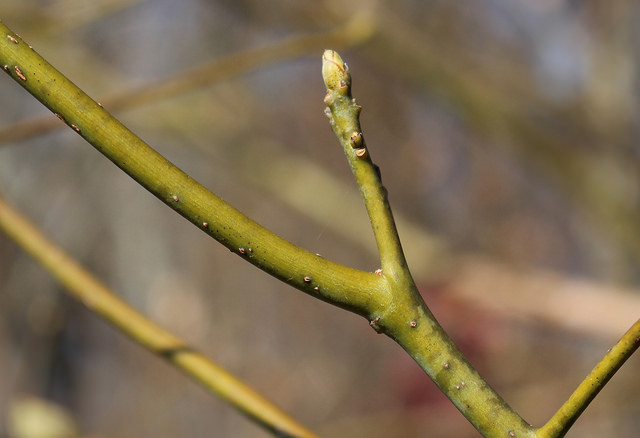
Sassafras twig and bud. D. Webb, Maryland Biodiversity Project ²
Three shapes of sassafras leaves. @ J. Hull, TU
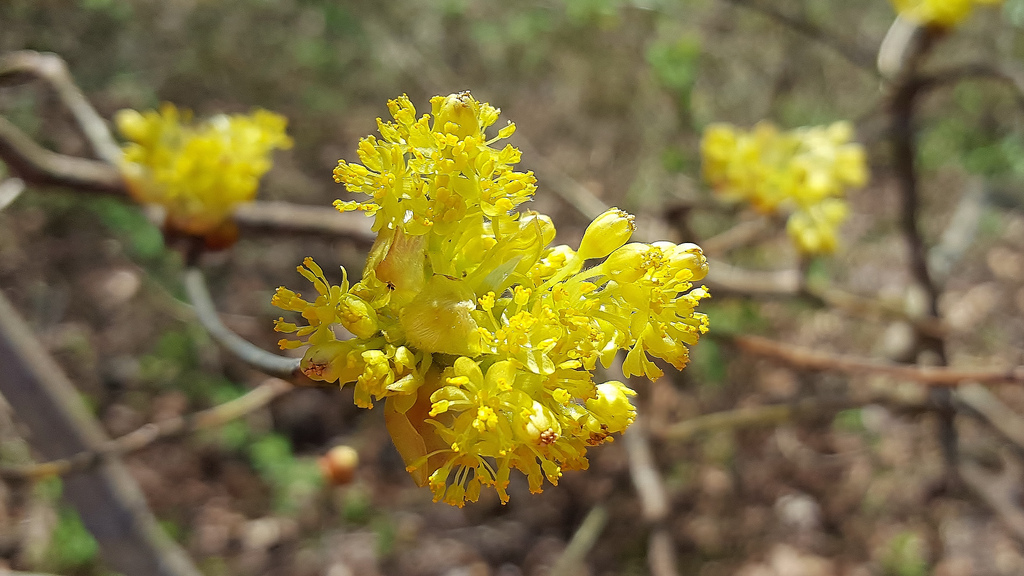
Flowers of Sassafras. M. Beziat, Maryland Biodiversity Project ²
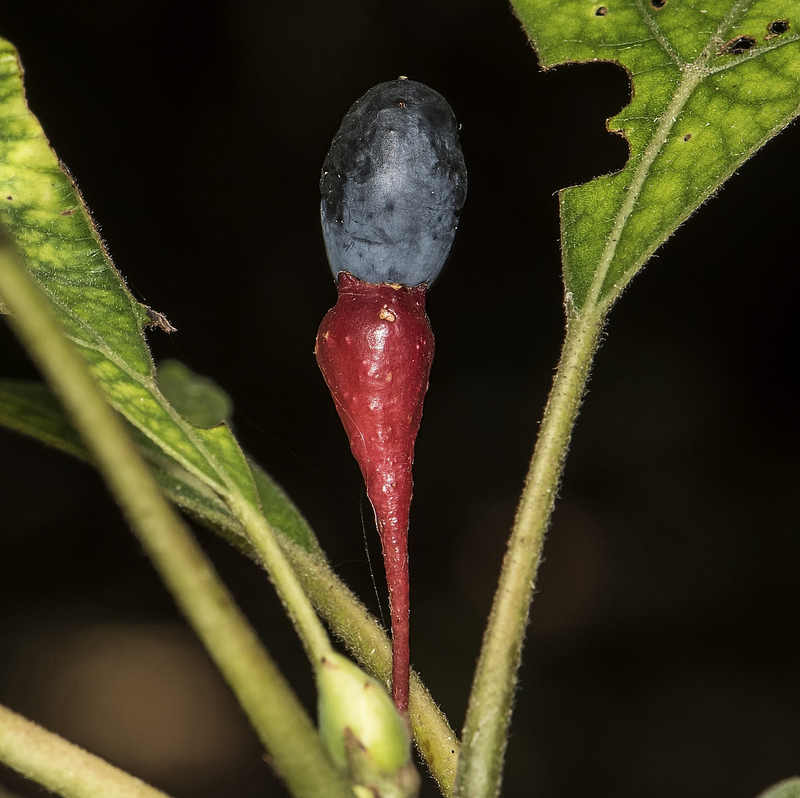
Sassafras fruit. R. Orr, Maryland Biodiversity Project ²
Distribution
Sassafras is distributed from southern Maine to Florida and to East Texas. Since it is shade intolerant, sassafras is most frequently found following disturbance or abandonment of agriculture¹. It may reproduce in shaded habitats from root sprouts¹. It grows best on moist, well-drained soils. In Maryland it can be found in every county².

Native distribution of sassafras. USDA¹
Wildlife Importance
Sassafras is an important browse species for deer¹. Numerous birds and mammals eat the fruits¹. It is the host plant for the caterpillars of the Promethea Moth³ and Spicebush Swallowtail Butterfly4.
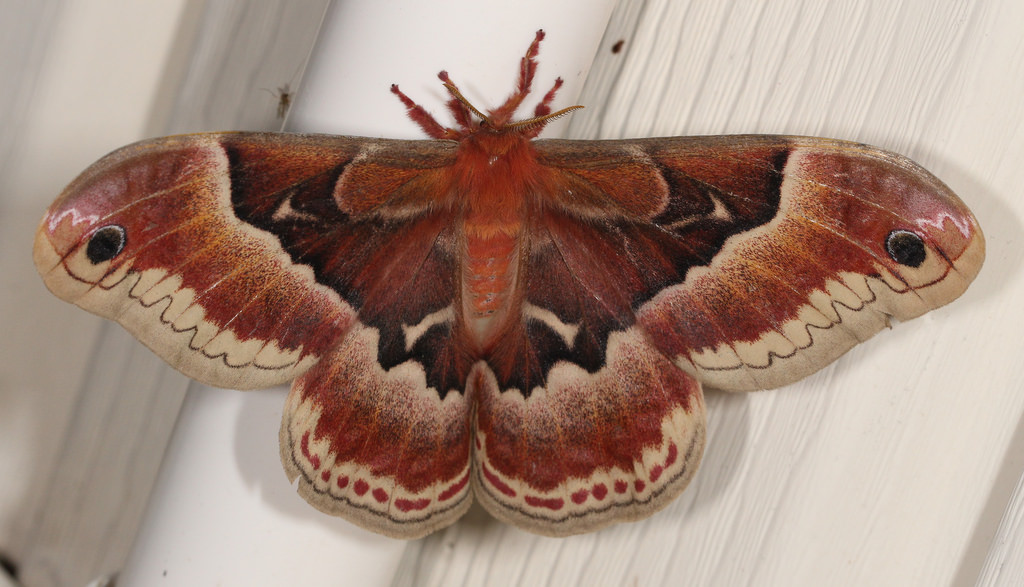
Promethea Moth. @ D. Webb. Maryland Biodiversity Project5
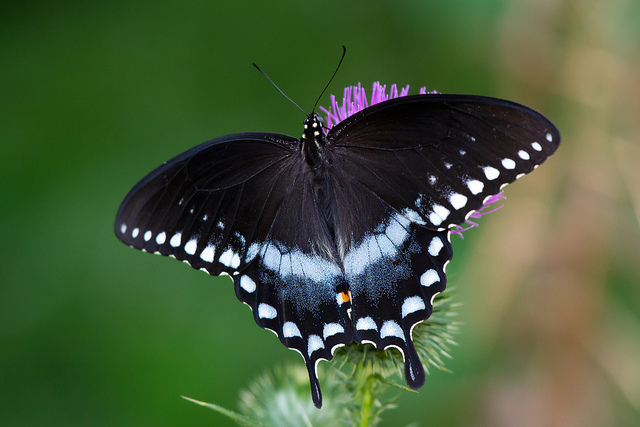
Spicebush Swallowtail Butterfly. @ F. Jacobson. Maryland Biodiversity Project7
Economic Importance
Sassafras roots may be used to make tea, however in high doses it may be carcinogenic. The orange wood can be used for barrels, buckets and furniture4. A powder from its ground leaves was used to make file´, the thickening agent for gumbo².
Threats
Sassafras is susceptible to several fungal infestations and numerous insects including the Japanese Beetle¹.
Interesting Facts
- Oils from the roots of sassafras are extracted and used in the perfume industry¹.
- Extracts of sassafras roots were used for flavoring root beer, but is now considered safe only if safrole, a carcinogen, is removed³.
References
- USDA-Forest Service Silvics Vol. 2 Hardwoods: Sassaferas albidum
- Maryland Biodiversity Project: Sassafras
- Georgia Native Plant Society, Sassafras
- North Carolina State Extension: Sassafras albidum
- Maryland Biodiversity Project, Promethea Moth
- Maryland Biodiversity Project, Spicebush Swallowtail
Contributed by J. Hull

